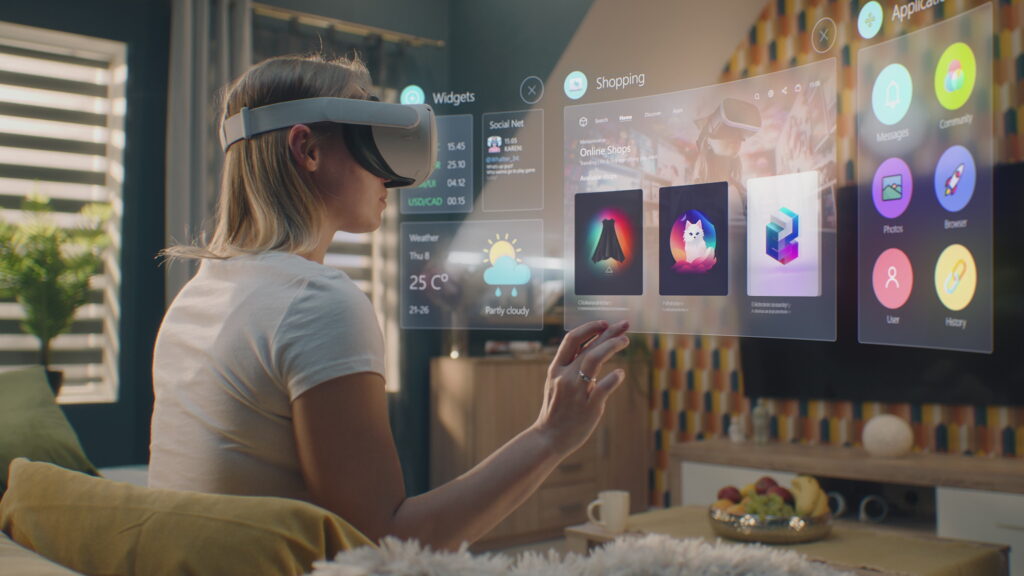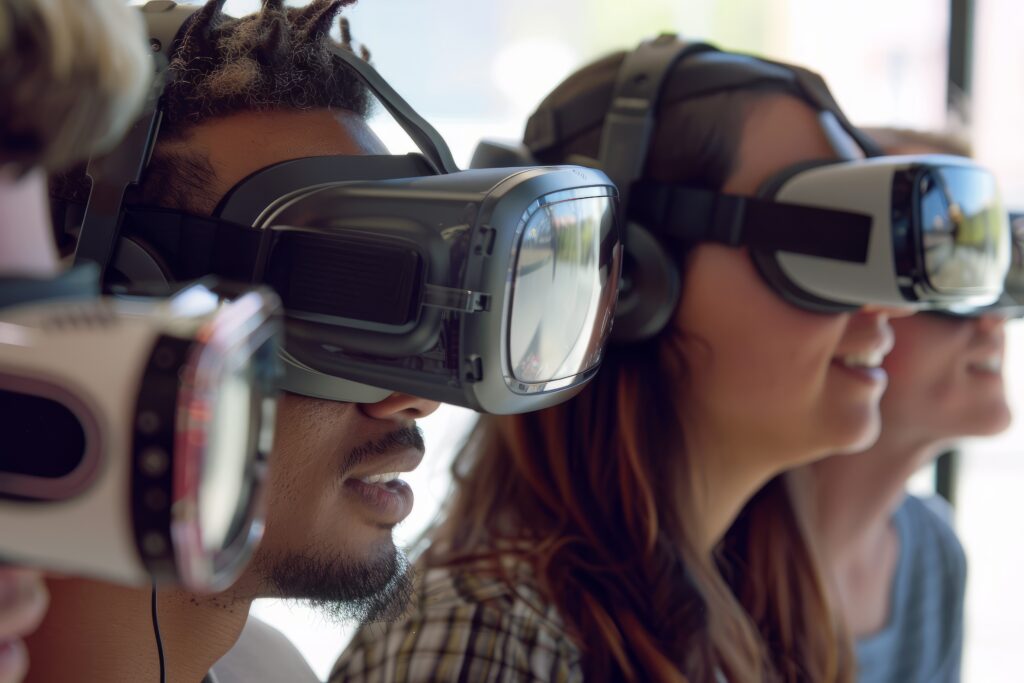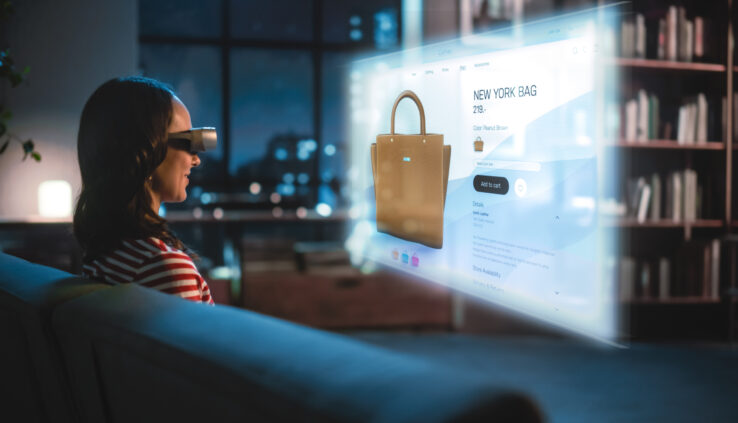E-commerce businesses are constantly seeking new and innovative ways to engage with their customers and stand out in a crowded digital landscape. One emerging trend that is capturing the attention of forward-thinking retailers is the integration of virtual reality (VR) technology into online shopping experiences. VR storefronts offer a unique opportunity to create truly immersive and engaging shopping destinations, transforming the way consumers interact with brands and products.
The Rise of VR in E-commerce
The growth of e-commerce has been nothing short of remarkable, with global online sales projected to reach $6.3 trillion by 2024. As consumers become increasingly comfortable with the convenience and accessibility of online shopping, businesses are seeking new ways to differentiate themselves and provide a more compelling and memorable shopping experience. Enter VR technology, which has the potential to revolutionize the way consumers engage with brands and products.
VR storefronts leverage the power of immersive technology to transport shoppers into a fully realized, three-dimensional virtual environment. By donning a VR headset, customers can explore a digital storefront, browse products, and even interact with them in a lifelike manner. This level of immersion not only enhances the overall shopping experience but also has the potential to drive increased engagement, brand loyalty, and ultimately, sales.
The Growth of VR Technology
The adoption of VR technology has been steadily increasing in recent years, with the global VR market expected to reach $12.5 billion by 2024. This growth can be attributed to several factors, including:
- Advancements in hardware: The development of more affordable and user-friendly VR headsets, such as the Oculus Rift, HTC Vive, and PlayStation VR, has made the technology more accessible to consumers.
- Improved software and content: The availability of high-quality VR experiences, ranging from gaming and entertainment to educational and training applications, has helped to drive consumer interest and adoption.
- Increased investment: Major tech companies, such as Facebook, Google, and Microsoft, have invested heavily in VR technology, further fuelling its development and mainstream adoption.
As VR technology continues to evolve and become more accessible, businesses in the e-commerce industry are recognizing the potential to leverage this immersive technology to create unique and engaging shopping experiences for their customers.
Enhancing the Shopping Experience with VR
One of the primary benefits of VR storefronts is the ability to create a truly immersive and engaging shopping experience. By transporting customers into a virtual environment, businesses can offer a level of interactivity and personalization that is simply not possible with traditional e-commerce platforms.

Increased Product Engagement
VR storefronts allow customers to interact with products in a more natural and intuitive way. Shoppers can examine products from multiple angles, zoom in on intricate details, and even manipulate them in a virtual space. This level of engagement can help to overcome the limitations of traditional online shopping, where customers are often limited to static product images and descriptions.
Some key benefits of increased product engagement in VR storefronts include:
- Improved product understanding: Customers can get a better sense of a product’s size, shape, and functionality, which can lead to more informed purchasing decisions.
- Enhanced product exploration: Shoppers can virtually “try on” or “test” products, such as clothing or furniture, to see how they would look or fit in their own environment.
- Reduced return rates: By providing a more immersive and realistic product experience, VR storefronts can help to minimize the likelihood of customers returning items due to dissatisfaction or misunderstanding.
Personalized Experiences
VR technology also enables businesses to create highly personalized shopping experiences. Customers can be greeted by virtual sales associates, receive tailored product recommendations, and even customize their virtual shopping environment to suit their preferences. This level of personalization can help to build stronger connections between brands and their customers, fostering loyalty and repeat business.
Some examples of personalized experiences in VR storefronts include:
- Virtual personal shopping assistants: Customers can interact with AI-powered virtual sales associates who can provide product recommendations, offer styling advice, and assist with the purchasing process.
- Customizable virtual environments: Shoppers can personalize the look and feel of the virtual storefront, such as choosing the colour scheme, lighting, and background music, to create a more tailored experience.
- Personalized product recommendations: VR storefronts can leverage customer data and browsing history to provide personalized product suggestions, similar to the recommendations found on e-commerce platforms like Amazon.
Improved Decision-making
By providing a more immersive and interactive shopping experience, VR storefronts can also help to improve the decision-making process for customers. Shoppers can get a better sense of a product’s size, fit, and functionality, reducing the likelihood of returns and increasing customer satisfaction.
Some key benefits of improved decision-making in VR storefronts include:
- Reduced return rates: Customers can better visualize and understand products, leading to fewer returns due to dissatisfaction or misunderstanding.
- Increased customer confidence: The ability to virtually “try on” or “test” products can help customers feel more confident in their purchasing decisions.
- Enhanced product discovery: VR storefronts can make it easier for customers to find the right products by allowing them to explore and interact with a wider range of options.
Driving E-commerce Growth with VR Storefronts
The integration of VR technology into e-commerce has the potential to drive significant growth and innovation within the industry. By offering a more engaging and memorable shopping experience, businesses can differentiate themselves from their competitors and attract a new generation of tech-savvy consumers.

Increased Conversion Rates
VR storefronts have been shown to have a positive impact on conversion rates, with some studies suggesting that customers who engage with products in a virtual environment are more likely to make a purchase. This can be attributed to the increased product engagement and personalization that VR technology enables.
According to a study by Deloitte, retailers that have implemented VR technology have seen a 40% increase in conversion rates, compared to traditional e-commerce platforms. This can be attributed to several factors, including:
- Improved product understanding: Customers can better visualize and interact with products, leading to more informed purchasing decisions.
- Increased engagement: The immersive nature of VR storefronts can capture the attention of customers and keep them engaged throughout the shopping experience.
- Enhanced personalization: Tailored experiences and recommendations can make customers feel more connected to the brand, increasing the likelihood of a purchase.
Enhanced Brand Loyalty
By creating a more immersive and memorable shopping experience, VR storefronts can also help to build stronger brand loyalty. Customers who have a positive and engaging experience with a brand are more likely to return and recommend the business to others, further driving growth and success.
Some ways in which VR storefronts can enhance brand loyalty include:
- Memorable experiences: The unique and engaging nature of VR shopping can leave a lasting impression on customers, making them more likely to remember and return to the brand.
- Emotional connections: The ability to interact with products and the brand in a more personal and immersive way can help to foster stronger emotional connections between customers and the business.
- Increased customer engagement: VR storefronts can encourage customers to spend more time exploring and interacting with the brand, leading to higher levels of engagement and loyalty.
Competitive Advantage
As e-commerce continues to evolve, businesses that embrace VR technology and offer innovative shopping experiences will be well-positioned to gain a competitive advantage. By staying ahead of the curve and offering a unique and engaging shopping experience, businesses can differentiate themselves from their competitors and attract a new generation of tech-savvy consumers.
Some key ways in which VR storefronts can provide a competitive advantage include:
- Differentiation: Offering a unique and immersive shopping experience can help businesses stand out in a crowded e-commerce market.
- Increased customer satisfaction: The enhanced product engagement and personalization of VR storefronts can lead to higher levels of customer satisfaction, which can translate into increased loyalty and repeat business.
- Attracting new customers: The novelty and excitement of VR shopping experiences can help businesses appeal to a younger, tech-savvy demographic, expanding their customer base.
Implementing VR Storefronts: Challenges and Considerations
While the potential benefits of VR storefronts are significant, businesses must also consider the challenges and practical considerations involved in implementing this technology.
Technical Considerations
Developing a VR storefront requires a significant investment in hardware, software, and technical expertise. Businesses must ensure that their VR platform is compatible with a wide range of devices and provides a seamless and user-friendly experience for customers.
Some key technical considerations include:
- Hardware compatibility: Ensuring that the VR storefront is compatible with a variety of VR headsets and devices, including both high-end and more affordable options.
- Software development: Investing in skilled developers and designers to create the virtual environment, product assets, and user interface.
- Scalability: Ensuring that the VR platform can handle increased traffic and user demand as the business grows.
- Connectivity and performance: Optimizing the VR storefront for smooth performance and seamless connectivity, especially for customers with limited internet bandwidth.
Content Creation
Creating the virtual environment and product assets for a VR storefront can be a time-consuming and resource-intensive process. Businesses must invest in skilled 3D designers, animators, and content creators to ensure that the virtual experience is visually appealing and engaging.
Some key considerations for content creation include:
- 3D modeling and asset development: Designing high-quality, photorealistic 3D models of products and virtual environments.
- Animation and interactivity: Incorporating dynamic animations and interactive elements to enhance the user experience.
- Lighting and visual effects: Ensuring that the virtual environment is visually stunning and immersive, with realistic lighting, textures, and visual effects.
- Ongoing content updates: Regularly updating the VR storefront with new products, seasonal collections, and other content to keep the experience fresh and engaging.

User Adoption
While VR technology is becoming more mainstream, there is still a learning curve for many consumers. Businesses must educate and onboard their customers to ensure that they are comfortable with the VR shopping experience and can navigate the virtual environment effectively.
Some strategies for promoting user adoption include:
- Providing clear instructions and tutorials: Offering step-by-step guides on how to use the VR storefront, including how to set up the headset and navigate the virtual environment.
- Offering in-person support: Providing on-site assistance or virtual support to help customers get started with the VR shopping experience.
- Promoting the benefits: Highlighting the unique features and benefits of the VR storefront, such as increased product engagement and personalization, to encourage customer adoption.
- Gradually introducing VR: Offering a mix of traditional e-commerce and VR shopping experiences, allowing customers to gradually become comfortable with the new technology.
Regulatory Considerations
Businesses must also consider the regulatory and legal implications of implementing VR technology, particularly in areas such as data privacy, accessibility, and consumer protection.
Some key regulatory considerations include:
- Data privacy: Ensuring that the VR storefront complies with data privacy regulations, such as the General Data Protection Regulation (GDPR) and the California Consumer Privacy Act (CCPA).
- Accessibility: Ensuring that the VR storefront is accessible to customers with disabilities, in line with regulations such as the Americans with Disabilities Act (ADA).
- Consumer protection: Adhering to consumer protection laws and regulations, such as those related to product safety, returns, and refunds.
- Intellectual property: Protecting the brand’s intellectual property, such as trademarks and copyrights, within the virtual environment.
The Future of VR Storefronts
The integration of VR technology into online shopping experiences is poised to become an increasingly important and influential trend. By creating immersive and engaging virtual storefronts, businesses can differentiate themselves, drive increased engagement and loyalty, and ultimately, boost their bottom line.
While the implementation of VR storefronts may present some challenges, the potential benefits for businesses and consumers alike are significant. As the technology continues to advance and become more accessible, we can expect to see a growing number of businesses embracing the power of VR to transform the way we shop and interact with brands.
Looking ahead, the future of VR storefronts holds exciting possibilities, including:
- Advancements in haptic technology: The integration of haptic feedback, which allows users to physically feel and interact with virtual objects, could further enhance the realism and immersion of VR shopping experiences.
- Increased social integration: The ability to shop and interact with friends and family in a shared virtual environment could create new opportunities for social commerce and community-building.
- Seamless omnichannel experiences: The integration of VR storefronts with traditional e-commerce and brick-and-mortar channels could provide customers with a truly seamless and cohesive shopping experience.
- Artificial intelligence and personalization: The use of AI-powered virtual assistants and personalization algorithms could make VR storefronts even more tailored and responsive to individual customer needs and preferences.
If you’re interested in learning more about how VR storefronts can benefit your e-commerce business, we encourage you to connect with geekspeak Commerce. Our team of experts can help you navigate the complexities of implementing VR technology and create a truly immersive and engaging shopping experience for your customers.
